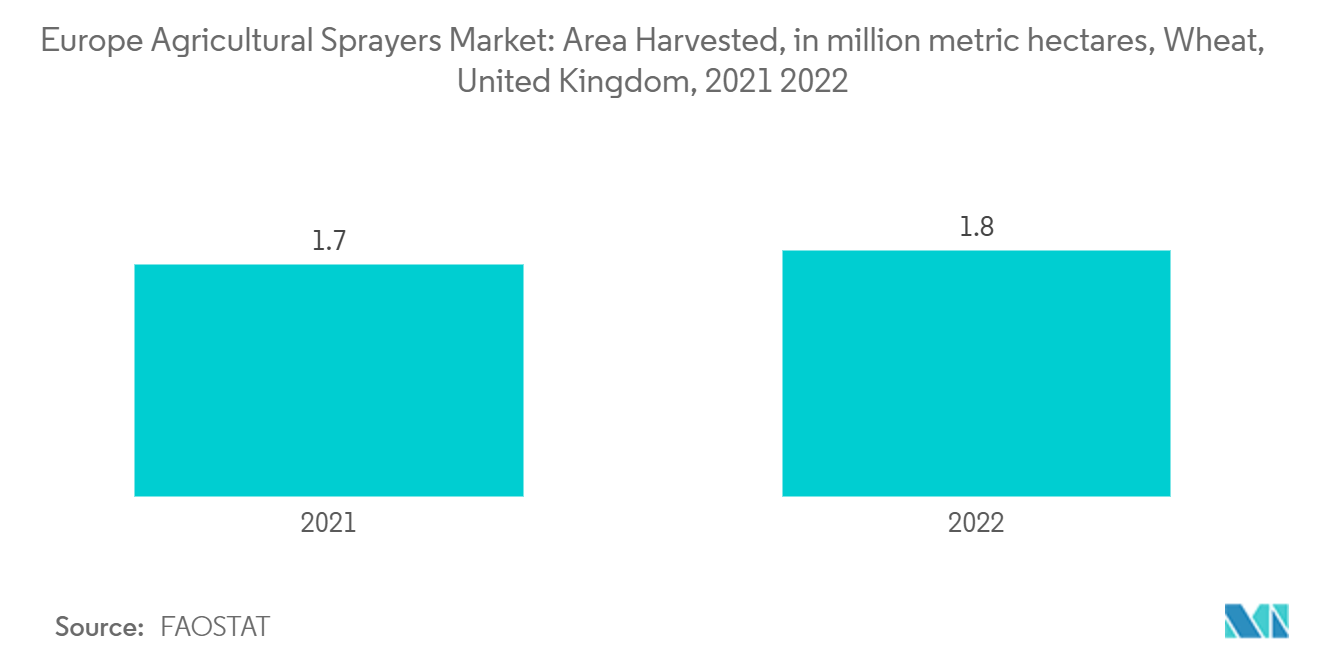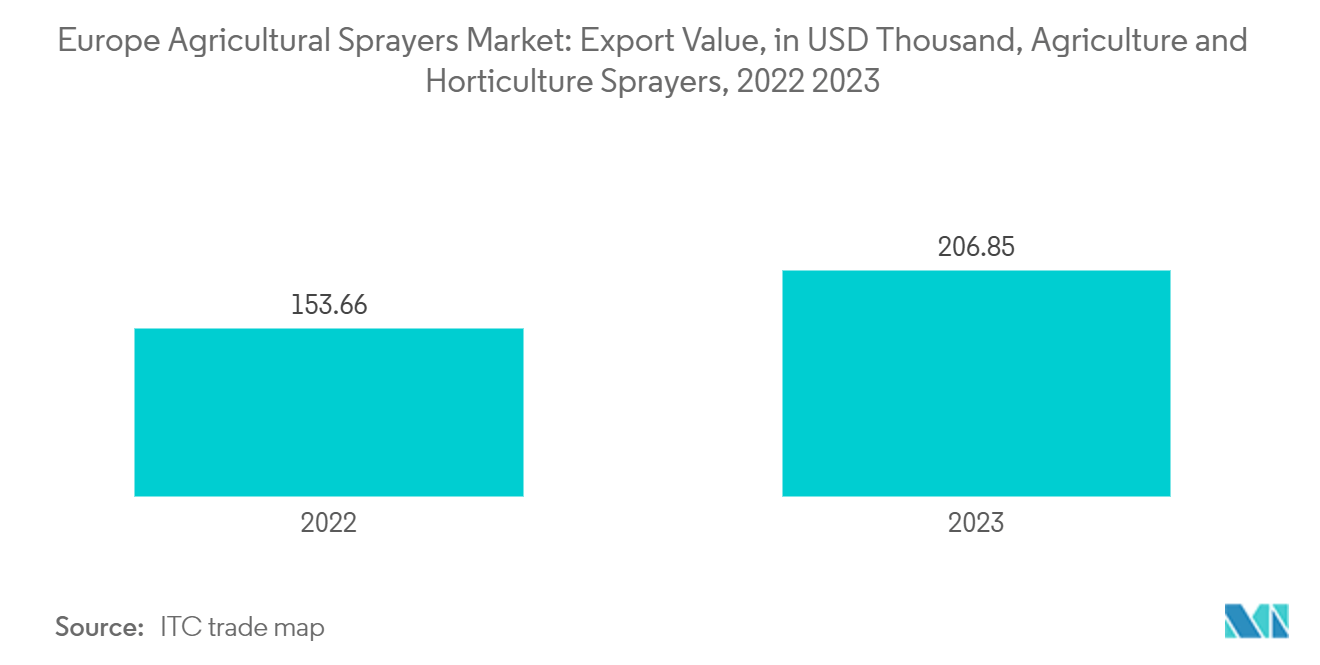Market Trends of Europe Agricultural Sprayer Industry
Field Sprayers segment Leads the Market
- Field Sprayers are the major segment in the Europe Agricultural Sprayers market. The European Union (EU) is one of the largest producers and exporters of grains globally, positioning itself as a key player in the international agricultural market. The area under the field crops is also observed to be growing during the study period. As per FAOSTAT, the area harvested under wheat in United Kingdom grew from 1.7 million hectares in 2021 to 1.8 million hectares in 2022. This high production and export potential enhances economic resilience, supporting rural economies and contributing to overall economic stability. These factors support the usage of the field sprayers thereby aiding the segment growth.
- Field sprayers play a pivotal role in integrated pest management (IPM) strategies, enabling farmers to administer treatments only when essential. With the rise of IPM programs across European nations, the adoption of controlled spraying systems in field crops is on the upswing, bolstering segment growth. In 2024, the "Growing and Protecting Crops Differently" (PPR-CPA) initiative, spearheaded by INRAE, is harnessing national research to pioneer sustainable agricultural practices without sacrificing performance. The initiative aims to enhance agricultural productivity while reducing reliance on synthetic pesticides by the 2030-2040 timeframe, leveraging preventive methods and agroecological insights. This vision further underscores the increasing reliance on controlled sprayers in field crops.
- Additionally, the introduction of new sprayers in Europe is bolstering the segment's expansion. In 2023, Bosch Basf Smart Farming started the production of Smart Spraying Solution at Herbert Dammann Gmbh in Germany. This is very helpful for the reduction of weeds in various crops. As the weeds are high in cereals the usage of the equipment becomes more in the crop thereby aiding the segment growth. Consequently, as the area dedicated to field crops expands and with the adoption of Integrated Pest Management (IPM) alongside these product launches, the market is poised for growth during the forecast period.

Germany Dominates the Market
- Germany stands as Europe's leading market for agricultural sprayers. The country is renowned for its engineering prowess and leverages this expertise to bolster its agricultural sector, driving market growth. Furthermore, Germany ranks among the top manufacturers and exporters of agricultural sprayers, both in Europe and globally. Notably, it's the world's second-largest export nation and the foremost in Europe. Additionally, the surge in sprayer exports is further fueling the market's expansion. According to the ITC trade map, exports of agricultural and horticultural sprayers from Germany rose from USD 153.66 million in 2022 to USD 206.85 million in 2023.
- Along with this, as the market for organic farming expands, the demand for specialized sprayers tailored to organic practices is on the rise. These sprayers often necessitate distinct application techniques and products. For example, organic farming land in Germany expanded from 1.8 million hectares in 2022 to 1.9 million hectares in 2023, according to Statistisches Bundesamt. Consequently, heightened consumer demand for sustainable farming practices is driving manufacturers to innovate sprayers that reduce chemical usage and lessen environmental impact, thereby fueling market growth.
- Moreover, market manufacturers are increasingly leveraging precision agriculture technologies, including GPS and data analytics, to enhance the accuracy and efficiency of spraying, thereby minimizing waste and optimizing resource utilization. In 2024, Kverneland Group has partnered with Dimensions Agri Technologies (DAT) to expedite the market for precision spraying systems. Their collaboration focuses on facilitating the installation of DAT's Ecopatch on Kverneland sprayers, targeting select European markets, with Germany being a primary focus. the burgeoning export potential of agricultural sprayers, coupled with a rising demand for innovative sprayer technologies, is propelling market growth throughout the forecast period.


